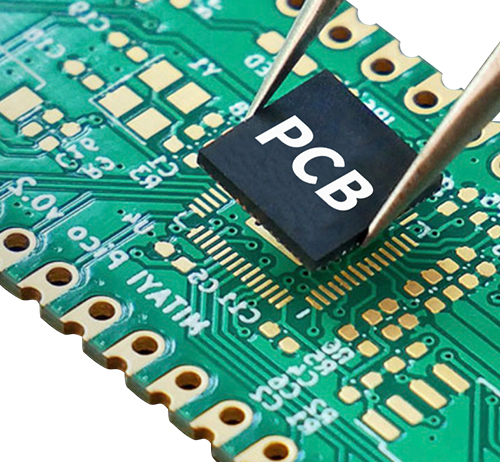Time:2022-11-30 Visit:
High precision multilayer circuit boards are generally defined as high multilayer circuit boards with 10 to 20 layers or more, which are more difficult to process than traditional PCB multilayer circuit boards, and have high requirements for quality and reliability. They are mainly used in high-tech fields such as industrial control, power and energy, medical care, automobile, security, computer, consumer electronics, national defense, transportation, science and education research and development, automobile, aerospace, and so on. In recent years, the market demand for high-precision multilayer circuit boards is still strong, and with the rapid development of China's telecommunications equipment market, the market prospect of high-level circuit boards is promising.
At present, domestic PCB sample manufacturers producing high-level PCB in small batches mainly come from foreign-funded enterprises or a few domestic enterprises. High level PCB production requires not only high technology and equipment investment, but also the experience accumulation of technicians and production personnel. At the same time, the introduction of high level PCB customer certification procedures is strict and cumbersome, so the threshold for high level PCB to enter the enterprise is high, and the period to achieve industrial production is long.
The average number of PCB layers has become an important technical indicator to measure the technical level and product structure of PCB enterprises. This paper briefly describes the main processing difficulties encountered in the production of high-level PCB, and introduces the control points of key production processes of high-level PCB for your reference.
1、 Main production difficulties
Compared with the characteristics of conventional PCB products, the high layer PCB has the characteristics of thicker boards, more layers, denser lines and vias, larger unit size, thinner dielectric layer, etc. The requirements for inner layer space, inter layer alignment, impedance control and reliability are stricter.
⑴ Difficulties in drilling
The use of high TG, high speed, high frequency, thick copper special plates increases the difficulty of drilling roughness, drilling burr and drilling dirt removal. The number of layers is large, the total copper thickness and plate thickness are accumulated, and the drilling tool is easy to break; CAF failure caused by many dense BGAs and narrow hole wall spacing; Inclined drilling is easy to occur due to the thickness of the plate.
(2) Difficulties in pressing and manufacturing
Multiple inner core plates and semi cured sheets are overlapped, and defects such as sliding plate, delamination, resin cavity and bubble residue are easy to occur during pressing production. When designing the laminated structure, it is necessary to fully consider the heat resistance, voltage resistance, glue filling amount and dielectric thickness of the material, and set a reasonable pressing program for the high-rise board. The number of layers is large, and the control of expansion and contraction and the compensation of size coefficient cannot keep consistent; The interlayer insulation layer is thin, which easily leads to the failure of interlayer reliability test. Figure 1 shows the defect diagram of cracked plate delamination after thermal stress test.
(3) Difficulties in interlayer alignment

Due to the large number of layers of high layer boards, the alignment requirements of the customer design end on each layer of PCB are becoming more and more strict. Generally, the alignment tolerance between layers is controlled by ± 75 μ m. Considering such factors as large unit size design of high-rise boards, ambient temperature and humidity of graphic transfer workshop, dislocation superposition and interlayer positioning mode caused by inconsistency of different core board layers, it is more difficult to control the interlayer alignment of high-rise boards.